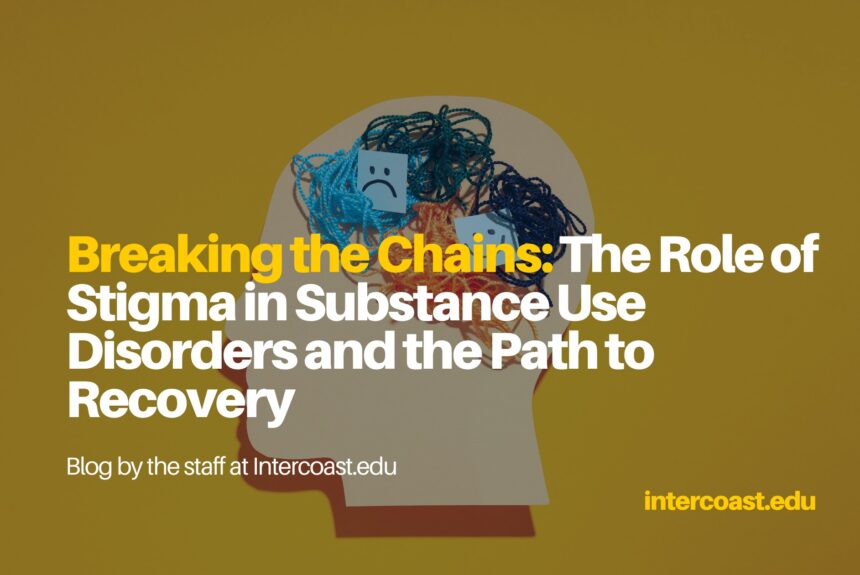Table of contents
Estimated reading time: 4 minutes
Substance use disorders (SUDs) represent a significant public health challenge worldwide, affecting millions of individuals across diverse demographics. Despite advancements in understanding the neurobiological and psychological underpinnings of addiction, stigma remains a formidable barrier that prevents many from seeking the help they need. This essay explores how stigma perpetuates silence and avoidance among those struggling with SUDs and underscores the critical importance of fostering understanding and support to facilitate recovery.
The Weight of Stigma
The stigma surrounding substance use disorders is deeply entrenched in societal attitudes and misconceptions. Individuals with SUDs are often labeled as morally flawed, irresponsible, or lacking willpower. These stereotypes not only dehumanize but also perpetuate a cycle of shame and isolation. Stigma may lead to employment, housing, and healthcare discrimination, further marginalizing affected individuals (American Psychological Association, 2017).
The internalization of stigma can be profoundly damaging. When individuals view their condition as a personal failing rather than a medical issue, they may experience decreased self-esteem and increased feelings of hopelessness. This internal conflict can exacerbate substance use as a coping mechanism, creating a vicious cycle that becomes increasingly difficult to break.
Barriers to Seeking Treatment
Stigma acts as a significant deterrent to seeking treatment for several reasons:
1. Fear of Judgment: Concern over being judged by family, friends, or healthcare professionals can discourage individuals from disclosing their struggles or pursuing help.
2. Mistrust in Healthcare Systems: Past negative experiences or perceived bias within healthcare settings may lead to avoidance of medical intervention.
3. Self-Stigma: Internalized negative beliefs about oneself can diminish motivation to seek recovery, as individuals may feel unworthy of assistance.
4. Legal Repercussions: Fear of legal consequences, particularly for illicit substance use, may deter individuals from accessing services that require disclosure of their substance use.
According to the Substance Abuse and Mental Health Services Administration (SAMHSA), in 2019, approximately 20.4 million Americans aged 12 or older had a substance use disorder. Yet, only about 4.2 million received any substance use treatment in the past year (SAMHSA, 2020). Stigma is a key factor contributing to this treatment gap.
The Ripple Effect of Untreated SUDs
The consequences of not seeking treatment extend beyond the individual. Families may suffer from strained relationships, financial hardship, and emotional distress. Communities could experience increased crime rates, higher healthcare costs, and reduced economic productivity. Moreover, untreated SUDs can lead to comorbid mental health issues, chronic diseases, and increased mortality rates.
Promoting Understanding and Support
Addressing stigma requires a multifaceted approach aimed at reshaping public perceptions and systemic responses to substance use disorders.
1. Education and Awareness: Public health campaigns may help dispel myths by providing factual information about the nature of addiction as a chronic, treatable medical condition. Educational programs in schools and workplaces could foster early understanding and empathy.
2. Language Matters: Adopting person-first language (e.g., “person with a substance use disorder” instead of “addict”) may reduce labels that perpetuate stigma. The American Medical Association recommends using non-stigmatizing terminology in all communications (AMA, 2017).
3. Media Representation: Responsible portrayal of SUDs in media could influence public attitudes. Highlighting stories of recovery and resilience rather than solely focusing on negative outcomes may inspire hope and encourage others to seek help.
4. Policy and Legislation: Supporting policies that promote access to treatment, protect against discrimination, and integrate mental health and substance use services may create an environment conducive to recovery.
5. Community Support Systems: Establishing support groups, peer counseling, and community outreach programs can provide safe spaces for individuals to share experiences and access resources without fear of judgment.
The Role of Healthcare Professionals
Healthcare providers play a crucial role in mitigating stigma. Professionals can build trust with patients by adopting compassionate, non-judgmental approaches and engaging in ongoing education about SUDs. Screening and intervention strategies should be integrated into primary care settings to identify and address substance use issues early.
Conclusion
Stigma is a pervasive barrier that hinders individuals with substance use disorders from seeking the treatment they need. By promoting understanding, challenging misconceptions, and fostering supportive environments, society may empower those affected to pursue recovery. It is incumbent upon all—educators, policymakers, healthcare providers, media, and community members—to dismantle stigma actively. Through collective efforts, we can transform perceptions of substance use disorders from moral judgments to compassionate recognition of a medical condition deserving of care and support.
Call to Action
We encourage individuals to listen without judgment, speak with empathy, and advocate for policies that support recovery. In doing so, we may aid individuals on their path to healing and strengthen the fabric of our communities. At InterCoast Colleges, we are committed to providing education and training in substance use disorder counseling, equipping our students with the skills needed to contribute to recovery efforts and support individuals in overcoming stigma.
—
References
– American Medical Association. (2017). AMA’s commitment to end the opioid epidemic. Retrieved from [AMA Website](https://www.ama-assn.org/delivering-care/opioids/ama-s-commitment-end-opioid-epidemic)
– American Psychological Association. (2017). The road to resilience. Retrieved from [APA Website](https://www.apa.org/topics/resilience)
– Substance Abuse and Mental Health Services Administration. (2020). 2019 National Survey on Drug Use and Health. Retrieved from [SAMHSA Website](https://www.samhsa.gov/data/report/2019-nsduh-annual-national-report)

